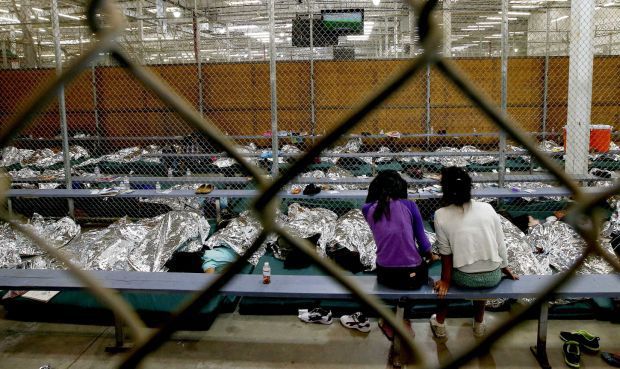PHOENIX — The Border Patrol has been destroying “critical evidence” of conditions at holding areas despite a lawsuit calling them inhumane, lawyers for migrants are charging.
Harold McElhinny said the federal agency has been on notice since at least June, when it was sued, that challengers contend that people apprehended by Border Patrol were deprived of sleep, exposed to unsanitary conditions, denied adequate food and otherwise subjected to “unconstitutional conditions of confinement.” And he said letters were sent to government lawyers in July “reminding defendants of their duty to preserve evidence.”
But it was not until late last month that the agency admitted that it had been routinely reusing videotapes, meaning the older ones are gone. And only now is Border Patrol taking special measures to comply.
The agency had a “reckless disregard” for its obligations, McElhinny told U.S. District Court Judge David Bury. And with the video record now gone, McElhinny wants Bury to tell the jurors who ultimately will hear the case that they should presume what was on those now-destroyed tapes would have proven what those suing the agency have claimed.
There was no immediate response by attorneys for the government.
But in her own court filing, Assistant Attorney General Sarah Fabian essentially conceded that Border Patrol lacks the capacity to keep all the old footage.
She said efforts are underway — but not yet completed — to expand storage capacity. And Fabian said the agency’s Tucson sector already has spent about $10,000 in emergency upgrades since Bury last month ordered the tapes preserved.
Fabian, however, did not address why it took until last month to make those efforts, given the agency knew two months earlier it was being sued over conditions that the tapes might show. McElhinny, in his legal brief, told the judge that failure is evidence that defendants behaved “willfully.”
The lawsuit cites conditions at offices in Arizona where those picked up by Border Patrol are held until they go to court, get released or are sent to more permanent detention centers. Challengers say while migrants are not supposed to spend more than 12 hours there, it is not unusual for that to drag on into two or three days.
What’s worse, the lawsuit says, are “overcrowded and filthy holding cells with the lights glaring day and night.” It also says migrants, stripped of outer layers of clothing, suffer from “brutally cold temperatures” and are deprived of bedding, adequate food, water, medicine and medical care.
Challengers have the testimony of several individuals. But they also hope that tapes of conditions can help prove their case.
“We considered video surveillance tapes part of what would be relevant,” said Karen Tumlin of the National Immigration Law Center. “They were on notice extremely early, right as soon as we filed the lawsuit, that we were interested in this.” And Tumlin said parties to a lawsuit are considered on notice to preserve anything that is “relevant.”
But the attorneys for challengers said it was not until last month that the Border Patrol halted its practice of automatically deleting older videos of the areas where migrants are held.
Tumlin also said the Border Patrol is only now taking measures to comply despite that Aug. 14 court order by Bury not to destroy or record over any tapes and to preserve all tapes already in their possession. And not everything is being preserved.
“Even after an explicit court order they weren’t doing what they needed to be doing,” she said. “That indicates that even before this case has really gotten underway that there’s kind of some disturbing signs that they may not be taking all the steps that are required of them.”
Fabian said the Border Patrol continues to work on expanding its storage. But in the interim, she told Bury, there are higher priorities.
“The stations have made the operational decision to continue, where possible, recording current video footage for the protection of officers and staff, as well as individuals detained at the facilities, even though this automatically causes recording over some existing stored surveillance footage,” she wrote.
Fabian told the judge Border Patrol is maintaining “the maximum amount of video possible based on current capacity.” She said Border Patrol is “doing everything in its power” to bring additional capacity online.
The challengers acknowledged that the $10,000 initial cost along with another $5,000 every three to four months is “not negligible.” But they pointed out the agency has a $12.7 billion budget.
And Tumlin said the price tag is legally irrelevant.
“Once litigation has been initiated they can’t go destroying things that could be relevant information in the case,” she said. “And if that means there are costs associated, then that’s kind of the cost of litigating.”
The judge has not set a date to hear the complaint.





